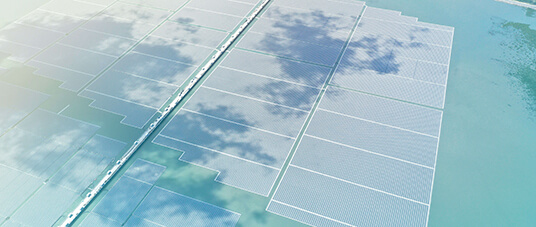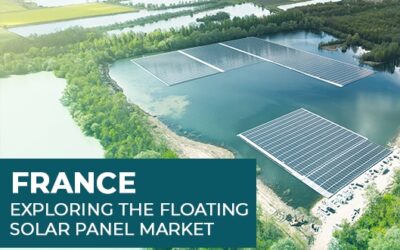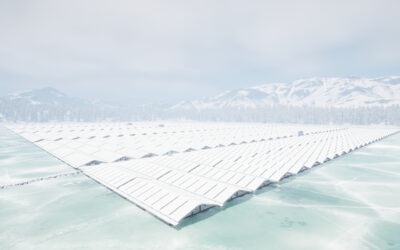So far 300 floating solar projects are installed with our technology, the oldest for more than 10 years now. Our experience shows that we need to understand accurately the behavior of the whole FPV system in extreme environments or situations. That’s why have established validation and test processes not only on our single product, but also the whole assembly to ensure the reliability of the FPV in the long term. As we strongly believe in lean amelioration, we installed a lab of our own for floating solar product validation and tests. The facility, located in Bangalore in India, started running in July 2022. It is also key to support Ciel & Terre to become more industrialized by getting more and more autonomous with our product testing.
Our R&D lab for floating solar product validation : functioning and tests purposes
A dedicated team of six people animates our lab life. We test all the products which compose a floating PV platform, from floats to the anchoring system. There are different types of tests being performed in our laboratory: short term accelerated tests and long-term tests.
We test all the products (from floats to the anchoring system) which is associated with FPV plant. We have test benches which is running 24/7 and million of cycles to simulate the performance of the product. Also there are short term tests with accelerated testing in order to replicate the extreme environmental conditions. Indeed, the ultimate aim is to ensure that our floating solar power plants are reliable and capable of lasting at least 30 years.
Find out more about Ciel & Terre’s quality approach at every stage of a project:
Customized test facilities to assess and improve the parts of floating solar platforms
Independently of their purpose, tests focus on different variables. Indeed, as mentioned earlier, a floating PV plant is subject to several environmental loads. These constraints can impact the different parts of the floating solar plant (floats and their connection, anchoring system, PV modules). That’s why relevant machinery must test the different elements of the FPV plant. Because of the specificities of floating solar plants, their elements sometimes need to be studied with customised facilities.


Product control with fatigue and loads tests
In our lab, we have a fatigue test bench to reproduce the water movements and their impact on the overall plant for both floats and interfaces. We then analyse the abrasion of fatigue phenomenon on the float ears and interface. Afterwards, when it seems necessary, we adjust our solutions accordingly.
To observe the loads absorbed by the panel fixation system maintaining the PV module, we have a specific test bench. Indeed, PV module fixing is one of the main functions of the FPV platform and a major component for its reliability. It is also one of the more complex items to assess as there are a lot of different configurations possible, depending notably on the panel size used. Moreover, the module features can impact the mechanical performance of the floating solar system in tensile, compression and fatigue situations. Plus, in real conditions, wind induces waves of cyclic loads onto the fixing system. That’s why our test bench can reproduce these effects by simulating millions of cycles to ensure that there is no fatigue nor abrasion of the system.
Challenging floating solar product : extreme weather conditions tests
To validate extreme anchoring loads, which may happen during extreme events (storms, typhoons), we have a tensile test chamber. This machine also assesses the loads spread between floats. It is important to measure the strength in floats, when they are assembled, and in various configurations along with individual float tests. This is how to design the ideal configuration of a floating solar array.
Finally, the heating & cooling chamber can measure the weather resistance of the different parts which make floating solar plants.
With our lab, we invested. We invested in the present to be more reactive to a fast-evolving market, and we invest in the future because we want that your floating solar plants last for at least 30 years. With our floating solar solutions, we want to offer you reliability, durability and bankability.
Discover our expertise and our projects in videos :
By Laura, Marketing
with the great collaboration of Jaison and Bharath, Tests and validation







